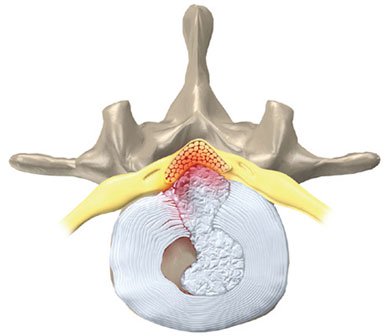Possible Cauda Equina Syndrome in a 29-Year-Old Male with Large Central Disc Herniation
I Have a 29-Year-Old Male With a Large Central Disc Herniation at L4-5. He States That He Has Had Difficulty With Urination. How Do I Make Sure He Does Not Have Cauda Equina Syndrome?
Cauda equina syndrome (CES) classically presents as low back pain, bilateral or unilateral sciatica, and bladder or bowel retention/incontinence due to neural compression in the lumbar spine. We know that the components of CES that involve pain are recoverable and certainly not harmful per se. It is the urogenital symptoms that are most concerning because of their morbidity and irreversibility.
Urinary retention is a common early sign heralding CES. Retention typically happens well before presentation and is often noted as a subjective complaint rather than objective finding. At 29 years old, your patient is unlikely to have other causes of urinary retention outside of CES. Typical causes can be categorized into obstructive, neurogenic, pharmacologic, and psychiatric etiologies. The classic obstructive causes are prostate enlargement, urethral strictures, and kidney stones. In older men, prostate problems should be inquired about and early evaluation by an urologist is needed. A history of urethritis and urethral strictures, which in your patient would most likely be due to infections from sexually transmitted diseases, may also be a cause of urinary retention. Renal stones are an obstructive cause of urinary retention. In this case, flank pain may be confused with low back pain. Pharmacologic causes of retention include heroin and demerol use. To treat pain, these drugs may have been initiated by the patient or prescribed by his physician. Prostate disease, urethritis, and stones can be ruled out with physical examination, blood and urine tests, and imaging modalities. Again, consultation with a urologist might be helpful if there is any suspicion of these diagnoses.
Once the diagnosis of CES is made, treatment is surgical decompression (Figure 33-1). Some authors recommend a complete laminectomy prior to discectomy to minimize manipulation of already compromised neural structures.1 Ahn et al2 performed a meta-analysis of outcomes following surgical management of CES. Their cardinal finding was that patients operated on within 24 hours and between 24 and 48 hours of onset of CES had equivalent outcomes. There were significant differences in outcomes when patients were operated on after 48 hours of CES symptoms. Patients operated on beyond 48 hours were at 2.5 times the risk of a persistent urinary deficit, 9.1 times the risk of a persistent motor deficit, 9.1 times the risk of continuing rectal dysfunction, and 3.5 times the risk of a sensory deficit. Other risk factors for poor outcomes were chronic low back pain, rectal dysfunction, and urinary incontinence at presentation.

Figure 33-1. Schematic of a large, central lumbar disc herniation causing severe compression of the cauda equina.
The sine qua non of CES is cauda equina compression. It is typically caused by a large disc herniation or a smaller herniation combined with spinal stenosis. In the analysis by Ahn et al, only 38% were due to disk herniations at L4-L5 or L5-S1.2 Hernations at other levels should not be underestimated. Overall outcomes can be good. Of patients who had surgery beyond 48 hours, 83% reported pain relief, 75% motor recovery, 73% recovery of urinary continence, 67% sexual function, 64% rectal function, and 56% sensory restoration.2
References
1. Shapiro S. Medical realities of cauda equina syndrome secondary to lumbar disc herniation. Spine. 2000;25(3):348-351.
2. Ahn UM, Ahn NU, Buchowski JM, Garrett ES, Sieber AN, Kostuik JP. Cauda equina syndrome secondary to lumbar disc herniation: a meta-analysis of surgical outcomes. Spine. 2000;25(12):1515-1522.
